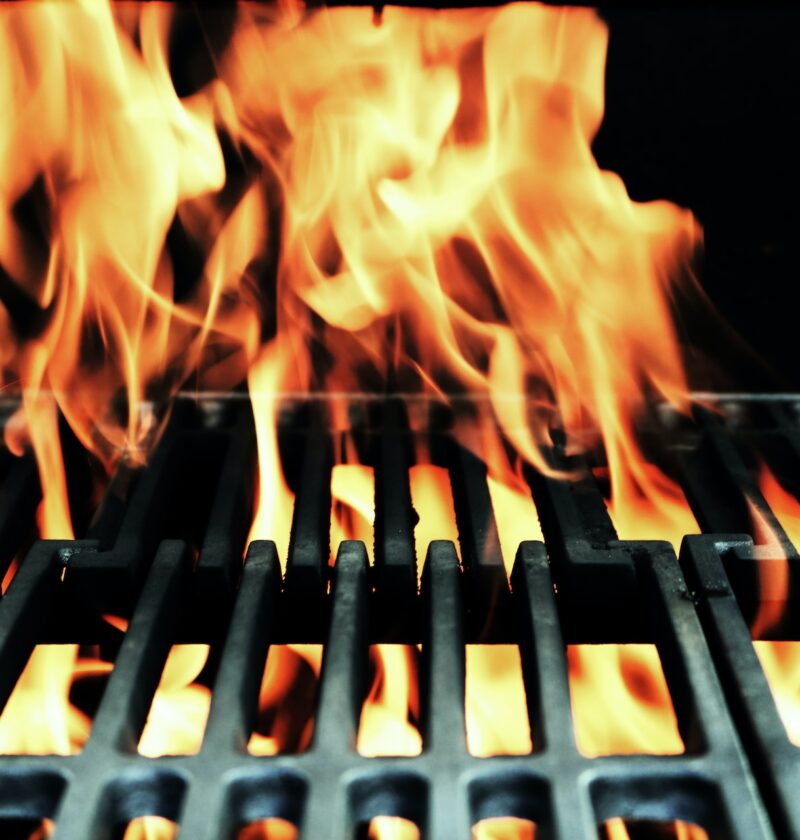The Santa Maria Grill holds a special place in California’s culinary heritage. More than a cooking method, this iconic barbecue reflects the lifestyle and ethos of California’s Central Coast. Its origins intertwine with the region’s ranching roots, and it continues to bring communities together through cherished traditions.
History and Origins
The origins of the Santa Maria style grill trace back to the mid-19th century in Santa Maria, California. Local lore credits the grill’s beginnings to the area’s Mexican and Spanish ranchers cooking meat over fragrant red oak wood coals.
Using the abundant regional oak allowed slow indirect heating to tenderize meats. Ranch hands leveraged iron ploughs and other farm tools as grates to expose foods to smoky flavours. This rustic style of open-flame barbecue catered towards cooking large cuts to feed ranch crews.
As the decades passed, families in Santa Maria Valley made the distinctive grilling technique part of their weekend gatherings. By the 1930s, restaurants capitalized on the style’s popularity. The original method evolved with purpose-built grills using adjustable cranks and custom grates. However, the core flavour principles remain unchanged.
Unique Cooking Method
Conventionally, grilling relies on direct high heat to quickly cook and sear foods. Santa Maria Barbecue takes an indirect approach. Meats are positioned above the smouldering coals, absorbing oak smoke without scorching. Red oak imparts a signature regional flavour while cooking low and slow.
The most authentic designs use a hand crank to elevate or lower the grate over the coals for temperature control. Chefs carefully balance the heat to lightly char the exteriors while keeping the interiors tender and juicy. Frequently rotating and flipping the meat prevents burning. Savvy grill masters know when to adjust to perfection.
The quintessential Santa Maria grill features a distinctive grate of slender steel rods. This allows small openings to let smoky heat rise into the meat while preventing flare-ups. Perforated grates also create those ideal char lines that make Santa Maria cuisine Instagram famous.
Part of Community Tradition
Wood-fired Santa Maria barbecue has become ingrained into California’s Central Coast culture and collective identity. The grills frequently appear at local fairs, festivals, and farmers’ markets, where their unmistakable aroma draws crowds.
Family barbecues on weekends often revolve around Santa Maria grills, passing down the time-honoured techniques. Locals fondly associate the nostalgic sights and smells with a sense of community tied to generations past. Beyond events, the bonds formed over these grills reinforce social ties.
Cuisine and Ingredients
While grilled meats like tri-tip steak may have the marquee, traditional sides are key to Santa Maria barbecue. Grilled garlic bread, pinquito beans, salsa, and fresh vegetables allow diners to appreciate the full experience. Local vineyards also pair well with the smoky flavours.
Salt, pepper, and garlic-seasoned tri-tip remain the star attraction. This cut was previously discarded or used for ground beef before Santa Maria adopted it for grilling. The town even hosts an annual California Tri-Tip Festival celebrating the now prized meat.
Geography and Evolution
While born in Santa Maria, the eponymous barbecue style has won over Californians statewide. As people migrated from the Central Coast, they brought its distinctive grilling with them. Santa Maria barbecue nights are a staple from San Diego to San Francisco.
Aficionados have even pushed the boundaries on preparation, incorporating new seasonings and ingredients while staying true to the original execution. This balance of innovation and tradition has bolstered its popularity among backyard grillers seeking new flavours.
Preserving Authentic Heritage
To preserve heritage alongside innovation, groups like the Santa Maria Valley Barbecue Association educate newcomers on traditional techniques. Local cook-offs judge not just results but adherence to customs. Stacked red oak, pinquito bean sides, and distinct seasonings must appear.
Quality craftsmanship also helps new generations own an authentic piece of culture through Santa Maria cookware. Companies like J.D. Fabrications construct grills from steel in the Santa Maria Valley precisely to local specifications.
Conclusion: Keeping the Traditions of Santa Maria Alive and Well
While the future promises continued evolution, the spirit of Santa Maria barbecue keeps traditions alive. Through hands-on community gatherings, distinctive flavours, and valuing timeless craft, each dish connects you to the culture of California’s rugged past and the promise of brighter days ahead.







